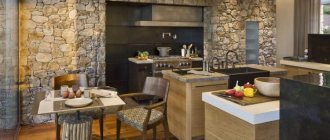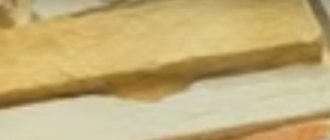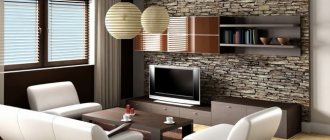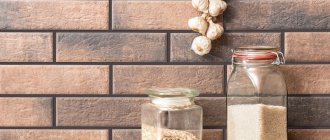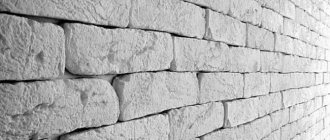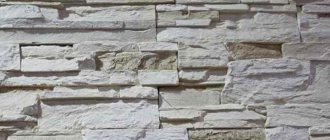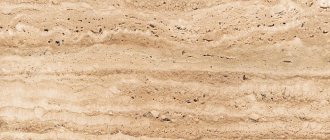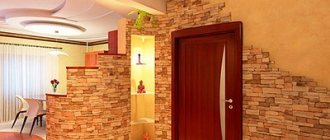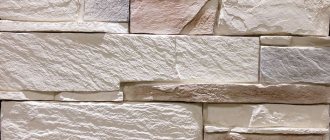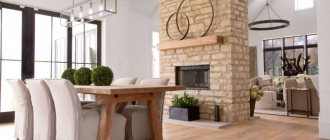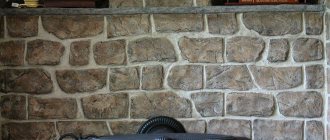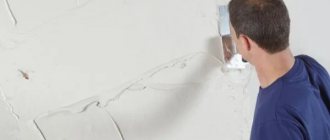What and how to cut decorative stone correctly
Decorative stone is understood as materials of artificial origin that replicate the appearance and, in part, properties of natural stones: granite, marble, tuff, sandstone, etc. Modern development of technology makes it possible not only to imitate any natural finishing material, but also to ensure its good workability .
For an on-site finisher, it is important to know how to cut decorative stone, how to drill it, and how to assemble a whole object from separate parts. Solving these problems requires familiarity with the properties of such materials.
- Physical properties of decorative stone
- Stone cutting tools
- Technology and instructions for cutting stone
- Useful advice from professionals
Advantages and disadvantages of each method
Each of the tools has its own characteristics. So, tckb sawing gypsum tiles with a hand saw for wood, its ends will have a low class of surface cleanliness (roughness), and sometimes unevenness. The reason for this is the large teeth of the blade.
In terms of cut quality, it is better to use a hacksaw for metal - the edges will be smoother, so the need for subsequent processing is minimal. But this process takes much more time.
How to cut gypsum tiles if speed is important? For cutting, it is more advisable to use a grinder with a diamond blade. But it also has its drawback - increased dust content due to the processing of gypsum polymer tiles with power tools at high speeds.
When using manual cutting methods, it is recommended to additionally use a miter box - a rectangular, usually wooden tray with special slots (straight and at an angle of 45°) on the sides for a more even cut.
Types of stone products
Decorative stone finishing is carried out indoors and outdoors.
Any stones are suitable for interior decoration.
But for the exterior, natural stones or stones made from cement are better.
Gypsum stone
This stone absorbs moisture very well.
If you finish the façade with such stone, you will need to treat it with something additional to avoid it absorbing moisture. Otherwise, the gypsum stone will quickly lose its decorative appearance.
A natural stone
It is best to use natural stone to decorate the facade. But keep in mind that natural stone has a fairly high price.
Fake diamond
Compared to natural stone, artificial stone is slightly cheaper and in some properties even better than natural stone. Manufacturers try to produce artificial stone of various shapes and colors, so the surface decorated with it can be made with a very unusual ornament or pattern.
In addition, artificial stone is much lighter than natural stone, so it will hold on more firmly.
Artificial stone will not load the wall, so it is used to decorate plasterboard walls.
Preparation of materials
Installation of gypsum tiles does not require special preparation of the base. It is enough to follow the basic principles:
- The surface should be smooth, without bumps or wavy bends;
- The base for the tiles must be cleaned and degreased;
- If the surface has pronounced absorbent properties or is porous, it should be pre-primed.
The adhesive for installation must be prepared in accordance with the instructions for use indicated on the packaging by the manufacturer. It is important that when applying the adhesive solution to a wall or other surface, the adhesive solution is controlled so that it fills all microcracks. However, a large amount of glue can create a "cement layer". It is best to use a spatula to apply the solution.
READ How to cut a plastic starter profile
Pay attention to the amount of glue prepared. Don't mix too much as you may not have enough time to use it before the expiration date. Keep in mind that lining corners takes a little longer than working on a wall.
Making artificial stone from gypsum with your own hands
As a rule, professional production of artificial stone from gypsum occurs in a factory. However, it is quite possible to make it yourself.
Some craftsmen have turned the interesting and exciting activity of making decorative stone into a quite profitable business. Moreover, without large investments and with minimal effort, its production pays off in a short time.
If certain rules are followed and high-quality raw materials are used, such activities are promising and quite profitable.
The use of natural gypsum in its pure form is not advisable, since the products have low strength and are short-lived. Modern technologies offer the production of compositions from modified gypsum that have high strength and retain the qualities of the natural material.
Technology for manufacturing decorative artificial stone from gypsum
Not everyone can afford natural stone cladding, as it has a high cost. Therefore, it is more rational to use artificial stone made of gypsum or cement, which contains various color pigments, as well as polymer materials.
Required material and tools
- Plaster is white;
- A container, preferably made of plastic, for mixing components;
- Pallet;
- Table and polyethylene roll;
- Forms (matrices);
- Electric drill;
- Fluted glass;
- Any water-based dyes.
DIY gypsum stone
Preparation of the workplace
To produce stone, large working areas are not required. Two square meters is enough.
We will provide the workplace with a table in advance. There should be racks with shelves at hand where all the necessary elements and equipment will be placed.
Preparing forms
Attention should be paid to the forms themselves (matrices). The most optimal are silicone molds. They are quite flexible and plastic. But forms made of metal, wood, and plastic are also allowed, although they do not so thoroughly convey the texture of plaster, which reflects the smallest details of the relief and its bends.
Preparation of materials for making stone from gypsum
Preparation of materials
After preparing the workplace and equipment, we prepare the material. For the gypsum test we need mineral gypsum, anhydride, and clean water. This will form the basis of the plaster test. Sand or similar filler is also prepared.
- The material cannot be glued to a base that changes its size under the influence of external factors (wood, plywood, chipboard, fiberboard and other similar materials);
- The tiles are not recommended for finishing surfaces that are exposed to moisture and dampness; such tiles can be used in rooms with humidity up to 75%;
- Do not allow glue to get on the front surface of the facing tiles.
- It is necessary to carefully unstitch the seam. The grout for the seam must not be allowed to get on the front surface of the tile;
- Installation must be carried out at air and base temperatures from +10°C to +40°C. Grouting should be done no earlier than 24 hours after laying the tiles.
The base must be strong, solid, smooth, without wavy areas, and must not be subject to shrinkage or deformation. The surface must first be leveled and cleaned of dirt. It is also recommended to cover the wall surface with a layer of primer and let it dry for 1 hour.
About company
specializes in the production of cement products - paving slabs, facade facing stones, landscape design elements. We have also launched the production of interior elements from gypsum - interior facing stones, 3D panels and decorative elements.
Paving slabs
Paving slabs are widely used in the building materials market. Paving slabs have a number of advantages compared to asphalt, including environmental friendliness. It should be noted that the use of paving slabs in modern construction has a lot of prospects.
Paving slabs in construction are universal from an engineering point of view, they are easy to install, have a long service life and save the budget. Strength – the permissible load on one tile can exceed the weight of a small truck. Paving slabs will not leave you indifferent; they are easy to buy, since the final cost will be significantly less than analogous materials due to the durability of use and the initial cost per 1 square meter. Price is one of the reasons why sidewalk paving is so popular in cities.
Depending on the places of use, paving slabs are produced with different technical characteristics. Abrasion and resistance to the weather conditions of the region are taken into account; the determining property is its thickness. The basic principle by which the type of paving slabs is chosen is the location of its use; the thicker the tile, the more intense traffic it can withstand.
Facade facing stone
Decorative stone quickly entered the market and won leading positions with its excellent qualities, both its external unique appearance and its relatively inexpensive cost, variety, durability and ease of use. The entire range of decorative stone is widely used today. Decorative stone adds iridescence and creates a summer mood.
Our gallery presents a variety of options for external use of decorative stone. This decorative stone looks great in green forests and autumn areas. Often used in decorating fences, home and street podiums, and building foundations. The variety of shades will allow you to choose the most suitable decorative stone and give the necessary atmosphere.
Interior facing stone
Decorative artificial stone made from gypsum is pliable, easily processed, easy to saw, cut or grind. At the same time, it has sufficient strength. Gypsum stone is a good heat and sound insulator; due to its microporous structure, it can regulate the microclimate of the room, absorbing excess moisture from the air and slowly returning it when there is a deficiency.
Gypsum stone is increasingly gaining popularity and is becoming more common. Artificial stone today is present in almost every second interior, distinguishing it from others with its originality and unique respectability. Finishing with artificial stone looks luxurious and inspires us with wealth, respectability and well-being. From this we can conclude that artificial decorative stone has firmly entered into fashion and is gaining popularity, actively gaining momentum in interior design, making them original and unique, and most importantly, bright and different from each other.
3D panels
Three-dimensional walls in interior design are one of the most fashionable trends today. Modern finishing materials help create them - decorative 3D panels for walls made of gypsum. Depending on the design and color of the 3D panels in an apartment, house or office, you can create absolutely any mood and atmosphere - an atmosphere of soft comfort, discreet respectability or emphasized luxury. The volumetric decor of 3D gypsum panels can change the space and give the interior sophistication and modernity.
3D panels have important functional advantages:
Insulate the room and regulate humidity levels
Made from environmentally friendly natural material
Creates additional sound insulation
Do not support combustion (flammability class "NG"), ideal for finishing premises with increased fire safety requirements
Gypsum 3D panels are a stylish and environmentally friendly solution for the interior of your home and office.
Novosibirsk Boris Bogatkov St., 248a, 2nd floor, office 12 Opening hours: Mon-Fri 10:00-18:00 Sat 10:00-14:00 Sun By agreement
Exterior stone trim
Artificial decorative stone is very often used for exterior decoration . This material is characterized by durability, which allows it to preserve the original exterior for a long time. With its help you can decorate a room in Provence style. In this case, the walls of the house are completely lined with this material. If a person wants to add some zest to the exterior, then he can finish the base with artificial decorative stone.
Using textured stone for exterior decoration is a successful design solution. It goes perfectly with decorative plaster. Recently, artificial decorative stone made from gypsum has been widely used for exterior decoration. In its appearance, this material resembles natural material, which gives the exterior richness and unsurpassedness.
Artificial decorative stone for exterior decoration resists external influences much better from rain, dust and snow. The photo shows how the brickwork is covered with efflorescence, the border stone has darkened, and this finishing material also remains unchanged. You can also use decorative artificial stone for the landscape. With its use, you can create an original artificial stream or pond. This material is also used for finishing paths and paths. The stone is ideally combined with a variety of colors, which allows you to create a universal landscape design with its help.
Laying decorative stone
The work must be carried out by a qualified worker.
The prepared surface should be considered a facade consisting of concrete blocks, foam concrete, aerated concrete, brick or a base covered with a plaster composition.
If the facade of the building is sheathed with wood, sheet iron, or insulated with expanded polystyrene, installation of facade slate, decorative brick or other facing stone should be carried out only after preliminary preparation of the surface.
Before starting installation, it is recommended to moisten the surface and working side of the stone with a paint brush, otherwise the wall and facing stone will dry out the mortar before it has time to set. If the cladding is carried out in rainy weather, there is no need to wet the surfaces.
Light artificial stone (decorative brick Petrovsky, Klinkerny, Byzantium, facade slate Demidovsky, Vorontsovsky, Sayany) can be glued both from bottom to top and from top to bottom. It does not slip off the adhesive layer if it has been sealed with the right amount of water. For example, when facing a wall only to a certain height, it is more convenient to work from top to bottom, then whole stones will go to the top and subsequent rows, and cut stones to the bottom row.
Laying the stone from top to bottom avoids getting the adhesive on the finished masonry, which is extremely important. Removing drops of glue from the surface of the tile should be done in a timely manner - before they dry completely. Otherwise, the use of special chemical compounds will be required.
Heavy artificial stone (artificial slate Alps, Niagara, Riphean, decorative brick Old brick) should be glued from bottom to top. In this case, usually at the level of the first row, strictly according to the level, a starting strip (a metal profile for drywall) is attached to the wall, which serves as a stop. After completion of the work, the starting bar is removed (and sometimes left).
To obtain incomplete stones, broken facing stones are used, or whole ones are cut. You should adjust the size and sharpen the stones with a grinder (a diamond or a specialized stone disk), but you can use wire cutters and even an ax. It all depends on what size you need to shorten the stone to. The cut side of the tile can be tinted, so it will be less noticeable as a fresh cut.
Use adhesive designed for laying natural and artificial stone. Make the solution following the manufacturer's instructions. Apply the adhesive solution to the prepared wall with a smooth spatula with a layer thickness of approximately 0.5 cm. Level the adhesive with a notched trowel (recommended tooth height 4-6 mm). Apply the same layer of glue to the back of the stone. The glue should cover the entire surface of the stone. The thickness of the adhesive layer for light cladding is usually 6 mm, for heavy cladding 10 mm. Using a vibrating motion, press the tile firmly into the adhesive.
The adhesive consumption for light types of tiles is 3 kg. per sq.m., glue consumption for heavy types of artificial stone is 6 kg. per sq.m.
There are two main methods of gluing facing stones: with jointing and without jointing. When laying “with jointing”, the stones are glued at a distance of 1-2 cm from each other. To maintain equal intervals between individual tiles, wooden wedges or a special lining cord are laid, then all seams will be the same width. After the adhesive mortar has set, the seams between the stones are filled with joint mortar and sealed with a special tool - jointing.
In cases of frequent contact of stone with water (use on fountains or when water constantly flows from the roof onto the facade), for additional protection and increase the service life of the decorative stone, it is recommended to cover the lined surface with a water repellent.
Getting started with tiles
Again, I will repeat the hackneyed truth that before starting work, the surface on which you plan to work must first be primed. On my loggia, I glued the tiles onto extruded polystyrene foam and used a special primer for this material. In ordinary cases (brick, concrete, drywall) a standard deep penetration primer will usually suit you. One way or another, when purchasing a primer, consult the seller. Tell him what kind of wall you have and he will advise you on the necessary primer.
As for expanded polystyrene and plasterboard, here is a very clear example of how everything can be done - “Decorating the inside of the balcony with decorative tiles + mirror slopes.”
Be sure to prepare your work area, cover the floor and anything valuable nearby that can get dirty. It is not known where the flight of your imagination may take you.
THE PRICE FOR LAYING DECORATIVE TILES CAN BE FOUND ON THIS PAGE
